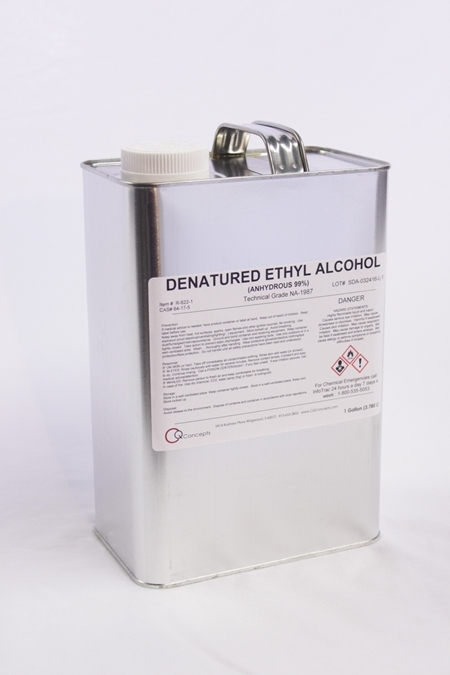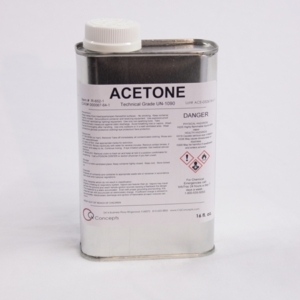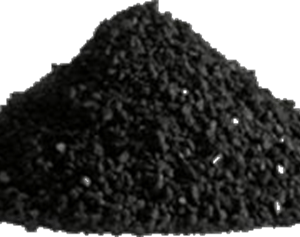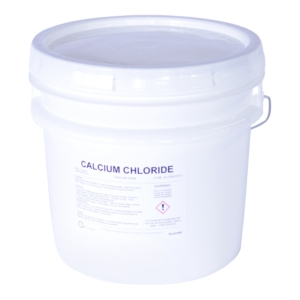Description
Note: This productis for sanitizing hard surfaces only. It is not suitable for making hand sanitizer.
Denatured Ethyl Alcohol 99%
From Wikipedia, the free encyclopedia
Methylated spirit (Meths or denatured alcohol—but not Rubbing alcohol which is different) is ethanol which has been rendered toxic or otherwise undrinkable, and in some cases dyed. It is used for purposes such as fuel for spirit burners and camping stoves, and as a solvent. Traditionally, the main additive was 10% methanol, which gave rise to its name, but this is not always the case now. There are diverse industrial uses for ethanol, and therefore literally hundreds of recipes for denaturing ethanol. Typical additives are methanol, isopropanol, methyl ethyl ketone, methyl isobutyl ketone, denatonium, and even (uncommonly) aviation gasoline.
As used in the phrase denatured alcohol, denatured means “a specific property of ethanol, its usefulness as a beverage, is removed”. The ethanol molecule is not denatured in the sense that its chemical structure is altered.
There is no duty on methylated spirit in most countries, making it considerably cheaper than pure ethanol. Consequently, its composition is tightly defined by government regulations which vary between countries. Different additives are used to make it both unpalatable and poisonous in such a way that is hard to rectify through distillation or other simple processes. Methanol is commonly used for this in part because it has a boiling point close to that of ethanol, and separating it by distillation is impossible because it forms an azeotropic mixture and will have the same boiling point. In many countries, it is also required to be dyed blue or purple with an aniline dye.
Formulations
CQ Concepts uses the following blend for Denatured Ethyl Alcohol.
86% Ethyl Alcohol
14% Methanol
1% Methyl Isobutyl
The regulations relating to denatured alcohol in the United States may be found at 27 CFR part 20.
Consumption and toxicity
Despite its poisonous nature, methylated spirits are sometimes consumed by the desperate or ignorant, which can result in blindness or death. To help prevent this, Denatonium is often added to give the substance an extremely bitter flavor. Substances such as Pyridine help to give the mixture an unpleasant odor, and emetic (vomiting) agents such as Syrup of ipecac may also be included.
It is not the methanol itself that is toxic, but the accumulation of its metabolites, formaldehyde and formic acid. Because the metabolic pathways for ethanol and methanol share a common enzyme, alcohol dehydrogenase, ethanol can be used to treat methanol poisoning by blocking the enzyme until the body can excrete enough methanol through the lungs and skin. (In a documented case, a shipworker poisoned while cleaning out a methanol tank was successfully treated with administration of a good portion of the liquor in the ship’s “medicine chest.”)
Uses
A common use is as a fuel for marine and ultra-light camping (backpacking) stoves. Its main advantages are its low cost, its ability to be extinguished by water, the fact that it is not explosive, and its ability to be transported without special containers. However, safety concerns do arise from the near-colorless flame with which alcohol burns. In brightly-lit areas, an alcohol flame can be essentially invisible, creating a potential hazard wherein persons can be burned by contacting flames they cannot see.
One notable use is as a sanding aid, as the alcohol helps to more easily remove the excess sawdust that results from sanding wood, because it does not open the wood grain the way that water would. Methylated spirits may also be used to kill mealybugs.
Methylated spirit is often also used for its solvent properties, for example to remove ink stains from upholstery or clothes. It is also well known to burn cold relative to paraffin when thrown upon a naked flame.





